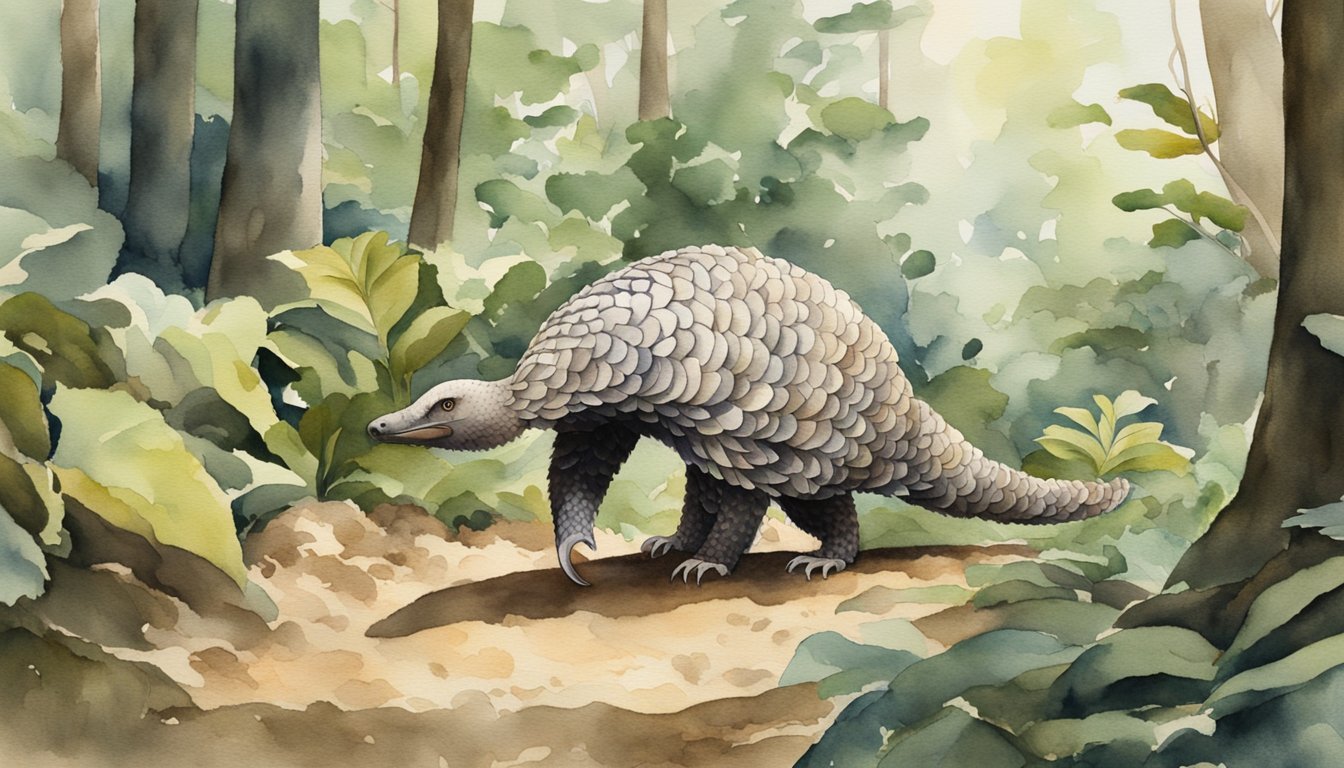Chinese Pangolin Overview

The Chinese Pangolin, known scientifically as Manis pentadactyla, is a unique mammal native to Asia, now facing critical endangerment due to illegal wildlife trade.
Species Classification and Habitat
The Chinese pangolin is classed under the order Pholidota and the family Manidae. This species, one of the eight existing pangolin species, thrives in various habitats ranging from the northern Indian subcontinent, including Nepal, through parts of Southeast Asia, to southern China. They inhabit tropical forests, grasslands, and hills, often preferring dense cover for protection.
Physical Characteristics
Chinese pangolins, sometimes called scaly anteaters, are distinguished by their protective, overlapping scales made of keratin—the same material human nails are composed of. Adult pangolins typically measure up to 1 meter in length and weigh approximately 2 to 7 kilograms. Their size and the density of their scales are key characteristics that aid in defense against predators.
Diet and Feeding Habits
A specialized diet marks the life of a Chinese pangolin, which primarily consists of termites and ants. Adapted to this diet, they have an extraordinarily long, sticky tongue for capturing insects within termite mounds and ant nests. The pangolin’s sharp claws are also crucial, allowing them to dig into these insect homes with ease.
Behavioral Patterns
The Chinese pangolin exhibits solitary and nocturnal behaviors, engaging in activities such as foraging and burrow digging under the cover of night. These mammals are known to be proficient climbers and swimmers as well. Reproduction for pangolins is a slow process, as they mature late and females give birth to only one offspring at a time, emphasizing the species’ vulnerability to threats.
Conservation and Threats

The Chinese pangolin, once prevalent throughout Asia and parts of India, is now facing severe threats that have led to its alarmingly diminished numbers, propelling conservationists to intensify their efforts to protect this unique species.
Endangered Status and Protection Efforts
The Chinese pangolin is classified as Critically Endangered on the IUCN Red List, indicative of a population decrease of more than 80% over three generations. These pangolins, also known as scaly anteaters, are now under strict international protection due to the Convention on International Trade in Endangered Species of Wild Fauna and Flora (CITES), which prohibits international trade. Countries like China have also upgraded their national protection status for these creatures, reflecting their commitment to pangolin conservation.
Threats to Survival
Pangolins, particularly the Chinese variety, face numerous threats:
- Poaching: They are illegally hunted for their scales and meat. Pangolin scales are erroneously believed to have medicinal properties in traditional medicine.
- Habitat Loss: The expansion of human developments infringes on their natural habitats, making it difficult for them to survive.
- Predators: There has been a noticeable increase in populations of predators, such as pythons, further threatening their existence.
International and Cultural Impact
The plight of the Chinese pangolin echoes beyond its native habitat, affecting international conservation decisions and cultural perceptions. For instance, they’ve sparked global dialogues on the need to shut down illegal wildlife trade routes spanning across Asia and Africa. Additionally, their precipitous drop in numbers has influenced shifts in cultural practices, highlighted by China’s move to remove pangolins from the official list of traditional Chinese medicine treatments, which could help alleviate some pressure from this vulnerable species. Through a combination of legal protection and shifts in cultural values, there is a collective effort underway to ensure the survival of the Chinese pangolin.

